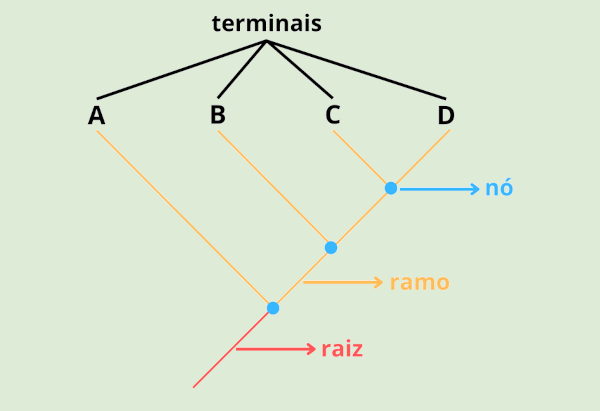A censorship it is a practice used mainly in authoritarian regimes in which the government prohibits the circulation of ideas and information, limiting them, in addition to barring and prohibiting various artistic manifestations. Censorship can have political or moral inspiration. It is carried out through government agencies that try to control what can and cannot be made public.
Throughout history, censorship has manifested itself in different ways in various parts of the planet, with emphasis on the totalitarian regimes of the 20th century. In the case of Brazil, the Estado Novo and the Military Dictatorship are the great examples of the use of censorship. Currently, the Federal Constitution prohibits censorship against political, artistic and ideological manifestations of the population.
Read too: Press freedom — what it is and why it matters
Topics of this article
- 1 - Summary on censorship
- 2 - What is censorship?
- 3 - Censorship in history
- 4 - Censorship in Brazilian history
- 5 - What does the Constitution say about censorship?
summary about censorship
Censorship is the practice that attacks the freedom of expression and thought of others.
Censorship seeks to prohibit the circulation of information and the realization of artistic manifestations.
It can be carried out by a political-ideological and moral inspiration.
In Brazil, the two great examples of censorship were the Estado Novo and the Military Dictatorship.
Currently, censorship is vetoed in Brazil by the Federal Constitution.
What is censorship?
Censorship is a practice, widely used in dictatorial governments, which prohibits information, content or artistic work from being disclosed. Censorship acts by establishing a disapproval of the message that will be disseminated, setting up a ban on its transmission. Generally, the use of censorship is justified as an action in defense of the State or society or based on some moral aspect.
Censorship is a very common practice in dictatorial regimes, who seek to omit fundamental information from their own population, in addition to limiting the free thinking of individuals. It is a strategy used, therefore, to guarantee the maintenance of the status quo and legitimize authoritarian governments and regimes.
The existence of censorship is linked to a repressive apparatus, since those who are censored can be punished for it, especially in authoritarian regimes. Thus, censorship can naturally act as a repressor of the population, causing it not to express its thoughts freely.
Thus, censorship is a deliberate action to withhold information, preventing its free circulation in society. It has a political or moral purpose and has been used several times throughout history.
Do not stop now... There's more after the publicity ;)
Censorship in history
Different regimes in history have already used censorship as a form of social control and maintenance of the status quo. In the Modern Age, for example, the Catholic church, through the counter-reformation, established the Index Librorum Prohibitorum, a list of books that were forbidden to faithful Catholics. With that, the Church prevented Catholics from having access to some books that were considered contrary to the dogmas of Catholicism.
During the Modern Age, those who were discovered reading any of the forbidden books could be indicted by the Court of the Holy Inquisition. Among the banned books were the writings of Martin Luther, the first of the great reformers, and Nicolaus Copernicus, defender of the heliocentric model.
That was the This is also the case in absolutist France in the 18th century, where published books, for example, underwent an evaluation judgment of a censor. And the stakes for those who defied censorship were enormous. Censorship was also present in many dictatorial regimes in the 20th century, for example.
The Chilean military dictatorship, led by Augusto Pinochet between 1973 and 1990, was marked by censorship, with a ban on books and strict control of newspapers and the class of artists in Chile. Furthermore, totalitarian dictatorships are examples of the use of censorship as a form of control.
You Nazis burned books deemed inappropriate and they had a secret police to investigate the population itself, in addition to having censors to control access to “unwanted content”. Fascism also censored journalists and the arts, and the Stalinist regime used censorship to filter information.
Read too: Totalitarian regimes—examples of governments that sought absolute control of the population
Censorship in Brazilian history
Brazilian history is also marked by the use of censorship at various times. Emperor D. Pedro I, who governed Brazil between 1822 and 1831, tried to implement a bill that established censorship of press vehicles. The aim was to use this law to persecute newspapers that were critical of the Emperor.
Other period well known for the use of censorship was the Estado Novo, the dictatorship led by Getúlio Vargas between 1937 and 1945. In the Estado Novo, the body responsible for carrying out censorship was the Department of Press and Propaganda, known as DIP. This body was created in 1939, being responsible for the regime's propaganda, but also for filtering information.
DIP operated in six important areas, which were: advertising, radio broadcasting, cinema and theater, tourism, press and the so-called auxiliary services (including several other areas of activity). Through the newspaper and the radio, official propaganda was disseminated, and the DIP still censored the news and cultural production in the country, preventing information considered sensitive from being transmitted. Cultural production in Brazil was entirely affected by Estado Novo censorship, which weakened only in 1945.
Omilitary dictatorship period was also heavily marked by censorship, because the newspapers had the news filtered. Without freedom of the press, journalists' work was limited to conveying the information the military wanted. The arts were also impacted by censorship, and several artists had their work banned. Many, like tropicalismo musicians, used allegories to carry out their denunciations.
To the allegories were a way to escape the censors. One of the examples of censorship, the song “Cálice” (an allusion to “calle-se” and the repression and censorship of the Military Dictatorship), composed by Gilberto Gil and Chico Buarque, was stopped by censorship in 1973. The body responsible for censorship during the Military Dictatorship was the Public Entertainment Censorship Division (DCDP).
What does the Constitution say about censorship?
A Brazilian constitution, enacted in 1988 a few years after the end of the Military Dictatorship, determines that censorship in Brazil is not allowed. This happens by reinforcing the population's freedom of thought, demonstration and expression, as well as a direct ban on censorship of a political, ideological and artistic nature, according to the text constitutional.
Thus, since the end of the Military Dictatorship, censorship has become prohibited in Brazil, as Brazilian citizens have the right to freely express their opinions, thoughts and your artwork. It is important to point out that the existence of freedom of expression and thought in our country does not entitle individuals or groups in society to propagate hate speech.
Sources
CONSTITUTION OF THE FEDERATIVE REPUBLIC OF BRAZIL. Brasília: Federal Senate, 2016.
SCHWARCZ, Lilia Moritz and STARLING, Heloísa Murgel. Brazil: A Biography. São Paulo: Companhia das Letras, 2015.
CARVALHO, Victor. Censorship: what does Brazilian law say? Available in: https://www.politize.com.br/censura/.
MICHAELIS. Censorship. Available in: https://michaelis.uol.com.br/busca? id=EK58.
SANTOS, André Marsiglia. What Is Censorship: For Beginners and Insiders. Available in: https://www.migalhas.com.br/depeso/376403/o-que-e-a-censura-para-iniciantes-e-iniciados.
WESTIN, Richard. Parliament overthrew plans of D. Pedro I to restrict freedom of the press. Available in: https://www12.senado.leg.br/noticias/especiais/arquivo-s/parlamento-derrubou-planos-de-d-pedro-i-de-restringir-a-liberdade-de-imprensa.
NATIONAL ARCHIVE. Lyrics of the composition “Cálice” by Gilberto Gil and Chicho Buarque, censored in May 1973. Available in: https://www.gov.br/memoriasreveladas/pt-br/centrais-de-conteudo/imagens-e-documentos-do-periodo-de-1964-1985/censura/letra-da-composicao-calice-de-gilberto-gil-e-chico-buarque-censurada-em-maio-de-1973/view.
ESSAY. A brief history of censorship. Available in: https://exame.com/economia/uma-breve-historia-da-censura.
By Daniel Neves Silva
History teacher



